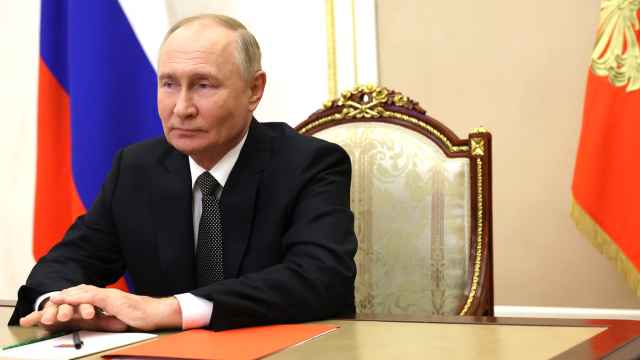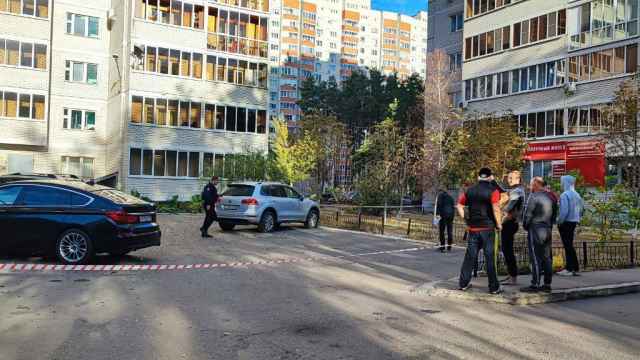Over the past several months, Ukrainian drones have penetrated ever deeper into Russian territory, striking an oil refinery as far away from the border as the northwestern city of St. Petersburg, and more recently, a drone assembly plant in the republic of Tatarstan. Increasingly, these air attacks are sapping into Russia’s diesel and gasoline production, which Kyiv hopes will hit the Kremlin’s wallet and reduce the availability of fuel for Russia’s war machine.
Between January and April of this year alone, Ukrainian airstrikes damaged 19 military facilities and at least 29 factories, oil refineries, and storage centers in Russia.
The geography of these strikes has expanded beyond the border regions. In particular, on Jan. 21, an oil and gas terminal over 1,000 kilometers from the border in the Leningrad region was hit Furthermore, on April 2, a factory producing Iranian-designed Shahed drones in Tatarstan’s Elabuga was hit. The Ukrainian Defense Forces are confident they could go further, potentially increasing the range of their drones to 3,000 kilometers, allowing them to hit targets beyond the Urals.
Moreover, the frequency and number of drones used are also steadily increasing. According to the Russian Defense Ministry, at least 53 drones were used to target Russian airfields in Morozovsk and Yeysk on April 5. I
The ability to launch such swarms of unmanned aerial vehicles (UAVs) depends on Ukraine’s production capacity, as well as donations from Kyiv’s allies. Thankfully, this is increasing steadily. The level of UAV production and deliveries in Ukraine increased by more than 120 times in 2023 as part of a larger effort to close the gap with Russia's strike capabilities.
Currently, at least 10 Ukrainian manufacturers are producing medium and long-range UAVs. Last November, one of them reportedly started producing en masse a kamikaze drone with a range of 1,000 kilometers. In February 2024, strategic industries minister Oleksandr Kamyshyn announced that Ukraine had already caught up with Russia in the production of UAVs similar to the Shaheds Russia uses to destructive effect against Ukraine.
"Ukraine has a plan aimed at reducing the potential of the Russian Federation, which covers the aggressor's military industry, critical military targets, airfields, enemy command and control points, etc.,” the head of Ukraine’s military intelligence, Kyrylo Budanov, said after the strike on the Dzhankoy airfield in Crimea.
According to Budanov, taking the war to Russian territory has direct effects on the situation on the Ukrainian front. He also noted that Ukraine is planning new drone attacks, as well as cross-border attacks by Russian volunteers operating inside Russia with Kyiv’s backing, to demonstrate that President Vladimir Putin is incapable of defending his country’s territory.
The damage caused when Ukraine strikes fossil fuel refineries and military targets deep in Russian territory is becoming a serious problem for the Kremlin. As a result of this strategy, Russian refineries have lost 10% of their capacity compared to last year. The attack on the Morozovsk military airfield in the Rostov region on April 5 destroyed at least 6 aircraft including Su-27 and Su-34M bombers, which Russia uses to drop soldiers into frontline cities.
However, the Kremlin now faces another equally acute problem: its interior is relatively unprotected. Russia's size has long been to its strategic advantage, as Ukraine did not have the forces and means to strike targets more than 100-160 kilometers from the border. As Ukraine scales up the number of drones at its disposal, it is also developing drones that can strike deeper into Russian territory. As a result, the size of Russian territory is turning from an advantage to a disadvantage, increasing the risk of hitting new targets in other regions of the European part of Russia.
This is because it is difficult to cover such a large area with the air defense systems Russia has available. Currently, more than 50 Pantsyr air defense systems are used to protect against UAV attacks. After attacks on refineries intensified, these sites have been instructed to purchase electronic warfare systems at their own expense, there are too few surface-to-air missiles to cover every critical industrial site.
To make up for this deficiency, Russia is creating mobile air defense groups, similar to the Ukrainian ones, which will be armed with anti-aircraft and heavy machine guns on the backs of trucks. However, all these efforts will not be able to fully counteract drones effectively, as potential targets are spaced huge distances apart. As a result, the Russian leadership may face a choice: to protect the air over military formations in occupied Ukraine, or to protect its own infrastructure in Russia.
This dilemma is already evident, as the Kremlin had to move air defense systems from Russia’s far east to Moscow and Crimea at the beginning of the year. And, probably, even earlier, S-400 air defense systems were transferred from the Kaliningrad region to replace the losses of such systems in the war in Ukraine.
Stretching Russian air defense systems in this way not only leaves ground targets exposed, but also leaves Russian aircraft defenseless. It is worth mentioning here the massive downing of Russian Su-34 bombers in early 2024, when 13 aircraft were shot down. The downing of two Russian A-50U long-range radar detection aircraft and an IL-22 airborne control center were also significant blows.
On April 19, 2024, for the first time since the full-scale invasion, a Russian Tu-22M3 long-range strategic bomber carrying X-22 cruise missiles was destroyed, as well as the missiles themselves. The aircraft was hit by a Ukrainian air defense missile at a distance of 300 km from the Ukrainian border.
We can assume that some surface-to-air missile systems have already been moved from occupied Ukraine to Russia, leaving these areas without cover Last week alone, Ukraine struck 4 facilities in occupied Ukraine behind enemy lines, including a military headquarters in Luhansk. For example, the attack on the Dzhankoy airfield in Crimea destroyed 4 S-400 launchers, 3 radar stations, an air defense control center, and surveillance equipment. The strike was carried out with seven ATACMS tactical missiles, which the United States handed over to Ukraine in the autumn of 2023. With the passage of a new $60 billion military and financial assistance package by the U.S. Congress in April 2024, it is safe to say there will be more such strikes to come.
Crimea has become a particularly special target for air strikes on critical facilities, with at least 6 military targets having been hit since the start of 2024. As well as the Dzhankoy airfield, the 31st Air Defense Division’s communication center, the underground command post and communication center of the Saki airfield, the Belbek airfield’s radar, the main special communications center of the Russian Black Sea Fleet have all been destroyed. The strikes occurred even though Russia pays special attention to the defense of the peninsula. But this extra emphasis on defending against attacks from the air and water has not been enough.
The Ukrainian armed forces’ decision to target this area systematically is an integral part of the de-occupation of southern Ukraine and Crimea. This tactic of making Russia die a death by a thousand cuts significantly weakens the enemy's ability to defend the region.
With such attacks, Ukraine is clearing the battlefield for the use of Western F-16s. At the same time, by striking deep into Russia, the Ukrainian Armed Forces are over-stretching Russian air defense capabilities.
Kyiv is fighting for a window of opportunity before the enemy can increase the protection of its targets with electronic warfare and form enough mobile fire groups to defend effectively against drone attacks. This window of opportunity must be seized, and it is a signal to Ukraine's partners to speed up military assistance to give Ukraine an advantage.
A Message from The Moscow Times:
Dear readers,
We are facing unprecedented challenges. Russia's Prosecutor General's Office has designated The Moscow Times as an "undesirable" organization, criminalizing our work and putting our staff at risk of prosecution. This follows our earlier unjust labeling as a "foreign agent."
These actions are direct attempts to silence independent journalism in Russia. The authorities claim our work "discredits the decisions of the Russian leadership." We see things differently: we strive to provide accurate, unbiased reporting on Russia.
We, the journalists of The Moscow Times, refuse to be silenced. But to continue our work, we need your help.
Your support, no matter how small, makes a world of difference. If you can, please support us monthly starting from just $2. It's quick to set up, and every contribution makes a significant impact.
By supporting The Moscow Times, you're defending open, independent journalism in the face of repression. Thank you for standing with us.
Remind me later.






